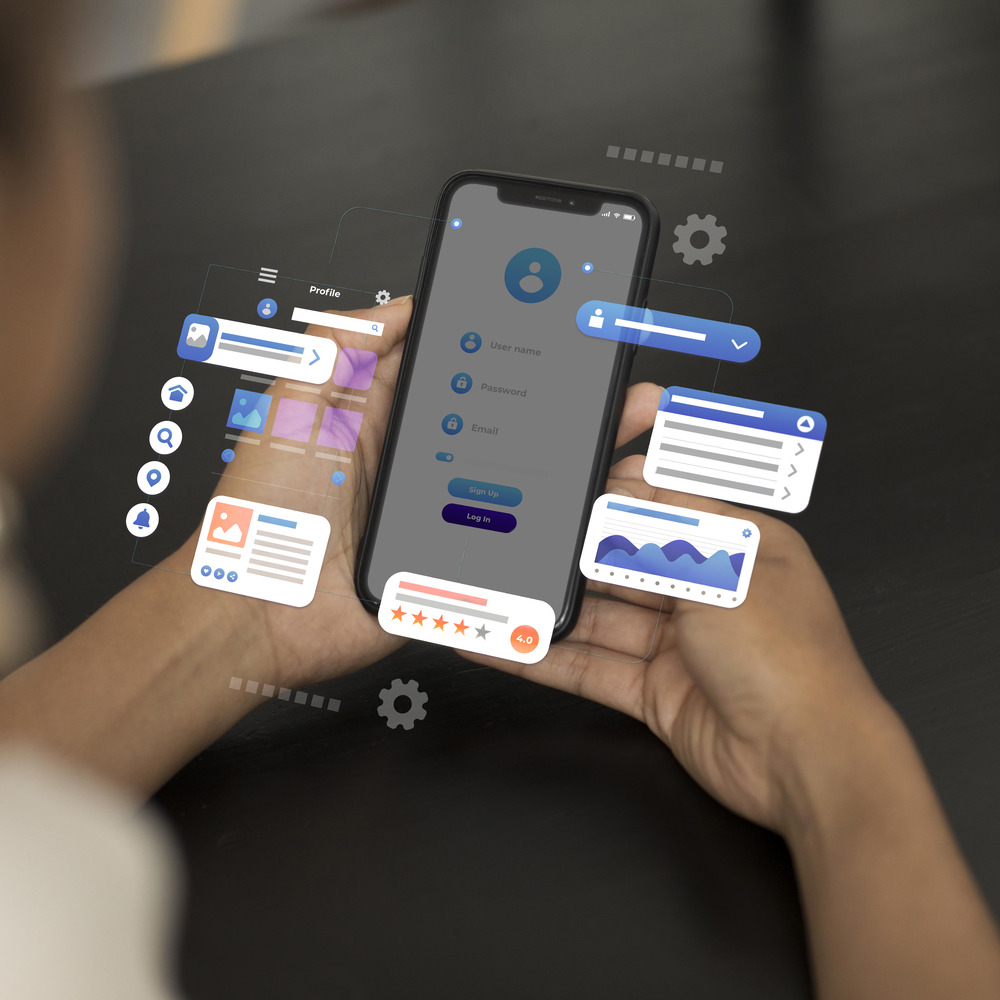
10 Mistakes to Avoid in Mobile App Development
Mobile app development has become a cornerstone of business strategy, allowing companies to reach their customers directly through their smartphones. However, creating a successful mobile app is no easy feat. Developers often face a series of hurdles during the mobile application development process that can severely impact the app’s performance, usability, and user retention.
In this guide, we’ll explore the top 10 mistakes in mobile app development and offer actionable steps to avoid them. By learning from these pitfalls and implementing the right strategies, you can significantly enhance your app’s chances of success in a competitive marketplace.
1. Failing to Define Clear Objectives
Problem: Unclear Goals Lead to Unfocused Development
One of the most common mistakes in mobile application development (or any other kind of software development) is failing to define clear objectives for the app. Without a defined purpose, the development process can become aimless, leading to an app that lacks direction and is ultimately irrelevant to users. It’s easy to get caught up in the features, but without understanding the core goal of the app, you risk missing the mark.
Solution: Set Clear, Measurable Objectives
Before you start development, ensure you have a clear idea of what problem your app solves. Define your target audience, the primary functions of the app, and key performance indicators (KPIs) such as user retention, app performance, or customer satisfaction. By clearly defining these goals, you give your developers a roadmap to work towards, resulting in a more focused, efficient development process.

2. Ignoring User Experience (UX)
Problem: Bad UX Leads to Poor Engagement
User experience (UX) is a critical component of mobile application development. An app that is difficult to navigate, cluttered, or unintuitive will lead to frustrated users and high abandonment rates. Even if the app’s functionality is robust, poor UX can significantly harm its overall performance and user satisfaction.
Solution: Prioritize User-Centered Design
To avoid this mistake, prioritize user-centered design throughout the development process. This means simplifying navigation, creating intuitive user flows, and designing a visually pleasing interface that complements the app’s core functionality. Always conduct user testing to gather feedback and iterate on design choices. A great app design not only makes the app aesthetically pleasing but also improves its usability, leading to higher user retention and engagement.
3. Overcomplicating the App with Unnecessary Features
Problem: Feature Creep Dilutes Focus and Performance
It’s tempting to add multiple features during the development process, but more features don’t always translate to a better app. Overcomplicating the app with too many features can dilute its focus, slow down its performance, and create confusion among users. Additionally, it can lead to longer development timelines, making it harder to launch the app on time.
Solution: Focus on Core Features and MVP
To avoid feature creep, focus on the core functionality and create a minimum viable product (MVP) first. An MVP includes only the essential features required to meet the app’s primary goals. By starting with a lean approach, you can release the app sooner, gather user feedback, and then gradually add additional features based on real-world usage and demand.
4. Ignoring Platform-Specific Guidelines
Problem: Inconsistent Experience Across Platforms
Every mobile platform (iOS, Android, etc.) has its own set of design guidelines and standards. Ignoring these platform-specific guidelines can lead to an inconsistent user experience, which can confuse users and make the app seem unpolished.
Solution: Follow Platform Design Guidelines
To create a consistent user experience across different platforms, familiarize yourself with and adhere to each platform’s design guidelines:
- iOS Human Interface Guidelines (for Apple devices)
- Material Design Guidelines (for Android devices)
By following these guidelines, you ensure that your app feels native to the platform and offers users an experience that aligns with their expectations. This also improves usability, reducing friction and enhancing user engagement.
5. Overlooking Performance Optimization
Problem: Slow Load Times and Laggy Performance
In mobile app development, performance is key to user satisfaction. Apps that load slowly or have laggy transitions can drive users away. According to Google, a one-second delay in mobile load time can reduce conversion rates by up to 20%. If the app doesn’t perform smoothly, users will abandon it, no matter how good the content is.
Solution: Optimize App Performance from the Start
To avoid performance issues, developers should focus on optimizing app load times and responsiveness from the outset. This includes:
- Efficient Coding: Write clean, efficient code to reduce unnecessary resource consumption.
- Image Compression: Use compressed images and media files to reduce load times without compromising quality.
- Caching: Implement caching strategies to store commonly used data locally and reduce the need for frequent network requests.
- Testing: Conduct load testing to identify and fix bottlenecks that could affect app performance.
6. Not Planning for Scalability
Problem: App Crashes Under High Traffic
A great app should be able to handle increasing traffic as your user base grows. Without proper scalability in place, your app may fail to perform under higher loads, leading to crashes, poor performance, and a frustrated user base.
Solution: Build Scalable Architecture
To avoid scalability issues, developers should use a cloud-based infrastructure that can dynamically scale based on user demand. Additionally, the app’s architecture should be modular, meaning components of the app can be scaled independently. Use load balancers, implement data partitioning, and optimize database queries to ensure that your app can scale smoothly as your user base grows.
7. Failing to Conduct Proper Testing
Problem: Bugs and Glitches Post-Launch
Mobile application development without proper testing is like building a house without inspecting the foundation—it’s bound to fail. Bugs and glitches can significantly harm the app’s reputation, and undetected issues can lead to poor reviews, user dissatisfaction, and uninstalls.
Solution: Implement Rigorous Testing Processes
Testing is crucial at every stage of mobile app development. Conduct various types of tests, including:
- Unit Testing: Ensure individual components of the app work as expected.
- UI/UX Testing: Verify that the user interface is intuitive and functional.
- Beta Testing: Release the app to a small group of real users to gather feedback and catch potential issues.
- Performance Testing: Test how the app behaves under different conditions, including network latency and varying user loads.
Test Continuously to ensure the app remains bug-free after updates and that all new features perform optimally.
8. Not Focusing on Security
Problem: Data Breaches and Security Vulnerabilities
In an era where data breaches and cyberattacks are increasingly common, overlooking security in mobile application development is a serious mistake. If your app stores sensitive data (such as payment information or personal details), failing to implement proper security measures can expose users to significant risks.
Solution: Implement Robust Security Protocols
To safeguard your users and avoid security vulnerabilities, implement the following measures:
- Data Encryption: Encrypt sensitive data both in transit and at rest using SSL/TLS.
- Authentication: Implement strong authentication protocols like OAuth or JWT.
- Regular Security Audits: Perform regular penetration testing and vulnerability assessments to identify and resolve potential threats.
Security should always be a priority, particularly when handling sensitive user data or financial transactions.
9. Neglecting Post-Launch Updates and Maintenance
Problem: App Becomes Outdated and Buggy
After launching your app, it’s easy to forget that the work isn’t finished. Mobile apps need regular updates to remain relevant, fix bugs, and introduce new features. Neglecting ongoing maintenance can cause your app to become outdated, buggy, or incompatible with newer versions of the operating system.
Solution: Plan for Regular Updates and Support
Create a maintenance plan that includes regular bug fixes, security updates, and performance enhancements. Collect feedback from users to identify pain points or areas for improvement and use that data to prioritize future updates. Ensure that your app remains compatible with the latest OS versions and stays aligned with current design trends.
10. Ignoring App Store Optimization (ASO)
Problem: Low Visibility in App Stores
Even if you build a fantastic app, it’s not going to succeed if no one knows about it. One major mistake developers make is neglecting App Store Optimization (ASO). Without proper ASO, your app may get buried under the competition in the App Store or Google Play.
Solution: Optimize Your App for Discovery
ASO involves optimizing your app’s name, description, keywords, and screenshots to improve visibility and increase downloads. Focus on:
- Choosing the Right Keywords: Include high-ranking, relevant keywords in your app’s title and description.
- Creating an Engaging Description: Write a concise and compelling description of your app’s features and benefits.
- High-Quality Screenshots and Videos: Show off your app with high-resolution screenshots and demo videos that highlight its key features.
Regularly monitor your app’s performance on the App Store and Google Play and tweak your ASO strategy as needed to improve rankings and visibility.
Conclusion
Avoiding these common mobile app development mistakes is essential for ensuring that your app not only meets user expectations but thrives in a competitive marketplace. By focusing on clear objectives, solid UX, performance, security, and continuous testing, you can create a high-quality app that delivers long-term value to your business and users.
Remember, mobile application development is an iterative process that requires constant attention, learning, and adaptation. By understanding these mistakes and actively working to avoid them, you’ll be well on your way to building a successful, high-performing mobile app.



